In a recent survey by Gallup, 96% of executives believed that remote workers are at a disadvantage compared to their on-site counterparts. This survey is reflecting the growing connection conundrum resulting from a mix of hybrid, remote, and on-site work environments. Remote and hybrid work environments seem to be here to stay with more than half of today’s companies being hybrid or fully remote. Many communication & connection challenges persist, including employee engagement, isolation, onboarding struggles, and more. We decided to ask our experts what some issues they were seeing regarding interpersonal connections, and what we might be able to do to improve those connections moving forward.
Answers From the Experts:
 Lyn Turknett, Co-founder and Co-chair, TLG
Lyn Turknett, Co-founder and Co-chair, TLG
With the current mix of remote, hybrid, and in person work environments, what barriers and challenges to interpersonal connections are you seeing?
There are multiple challenges as we move into a different stage of the pandemic and adapt to the combination of hot job market and the new “hybrid” office model. Despite challenges, though, I remain amazed at the adaptability of our organizations and the resiliency of the human spirit. Two specific communication challenges I’ve thought and heard more about in the past week are:
The difficulty of onboarding in a remote environment.
Many organizations have been surprised by how much work can be done remotely and effectively, but onboarding new team members has been more difficult. Once relationships in a team are established, it’s much easier to move to virtual ways of working, but we are not as good at building those relationships virtually. And most of our existing onboarding programs are designed to be in person and built around large and small group activities.
We will get better at dealing with these challenges. As hybrid designs become more typical, it seems likely that organizations will have new employees come into an office in early weeks of employment, and perhaps bring back group onboarding. There’s tons being written on the subject (See HBR’s How to Set Up a Remote Employee for Success on Day One and Onboarding a New Leader – Remotely, and HR Executive’s article on how virtual onboarding goes awry), and we’ll likely get better at it, but it’s bound to also impact retention when new employees don’t develop a sense of connection and belonging.
Our tendency to respond without filters when we respond electronically.
When we read or hear about something that annoys us, it’s very easy to just let that resentment build and to fire off a message quickly and in the heat of emotion. And we know that we won’t see or hear an immediate reaction. As my husband and business partner Bob says, “it’s so much easier to drop a bomb from the air.“ I witnessed a blow up on a message board just last week – someone read a post quickly, made an assumption, and then fired off a response blasting the writer. It took a few hours, but responses from others began to flow in asking that we all be less hasty, more thoughtful, and less blaming. And someone mentioned one of my favorite team ground rules for human relationships – ASSUME POSITIVE INTENT. The incident may have a long term positive impact on behavior in the group, but it was painful to watch.
What steps can we take to improve interpersonal relationships in these different environments?
1. I think teams always need to develop ground rules – what we call “operating guidelines” for how they will treat each other. That’s even more important in virtual environments, and they now need to specifically address our multiple communication environments. One example – it’s very challenging to hold a good hybrid meeting, where some are in person and some are virtual.
2. Assume positive intent – in ALL situations. Perhaps you will find that the intent was not positive, but in my experience that’s rare.
 Robin Mladinich, CPCC, ACC, Senior Consultant, TLG
Robin Mladinich, CPCC, ACC, Senior Consultant, TLG
With the current mix of remote, hybrid, and in person work environments, what barriers and challenges to interpersonal connections are you seeing?
Zoom fatigue is real. People are opting to turn off cameras when they can. Exhaustion sets in with multiple calls per day. Also, there is a tendency to go straight to business in an online meeting versus when you are in person and talk about your weekend, kids, pets. The mini-interpersonal connections that occur in the break room, when you want to get up and move around, and at lunch are not possible in the virtual environment. Even those working in hybrid environments often speak of a sense of isolation as people rotate days in the office. There may only be a few scattered across the building and they are eating lunch at their desks.
What steps can we take to improve interpersonal relationships in these different environments?
In the virtual world, take time to get to know people and connect with team members before jumping into business. Set aside the first 5 – 10 minutes of a meeting for interpersonal connection. Plan coffee chats, walking chats, or have virtual lunch together. If you are going to the office, plan lunches away from your desk and walk the floor. In person coffee and walk chats work too!
 Bill Dickinson, D.Min, Senior Consultant, TLG
Bill Dickinson, D.Min, Senior Consultant, TLG
With the current mix of remote, hybrid, and in person work environments, what barriers and challenges to interpersonal connections are you seeing?
Learning agility is a vital skill for those who want to stay relevant and curious in a work environment—and in a variety of forms. As many of us know, learning agility is the ability to learn from past experiences and to apply that knowledge or experience in real time for new solutions or possibilities. It is unlearning outdated, but once valued practices. And, so it is the same with interpersonal relationships and social opportunities. People are still emerging from a Covid-19 hibernation and isolation. We are feeling our way around how to engage and understand. The invitation for us is to be patient and respectful of how others are discovering anew how to best relate, and over different mediums. Let’s be transparent about fears and challenges; but also make a commitment to see value in better connecting because it is right, healthy, and hopeful.
What steps can we take to improve interpersonal relationships in these different environments?
A tactic that may be helpful to teams, functions, and cross-functional relationships is to set up 2-3 discovery meetings where participants express their feelings and ideas on how to navigate and honor relationships; and through virtual and live environments. A skilled facilitator is recommended for these conversations. In addition, this consultant is a big proponent of establishing interpersonal norms for both communication and collaboration. These would be four norms of behaviors/qualities/practices that the employees of a team commit to identifying and defining so as to live and own the norms, together. And, with the larger purpose of validating and supporting one another.
 Vicki Abelson, ACC, Senior Consultant – Healthcare, TLG
Vicki Abelson, ACC, Senior Consultant – Healthcare, TLG
With the current mix of remote, hybrid, and in person work environments, what barriers and challenges to interpersonal connections are you seeing?
As the working world shifts back to in person work (or hybrid), I have noticed an interesting trend. More and more leaders are reporting a drop in confidence, especially when speaking in public (presentations, running meetings, etc). It seems puzzling. Why do leaders, who have all the necessary experience, have trouble with something that used to not be a big deal at all? What’s more, as I have these conversations with leaders, they are positive that they are the only ones going through this. Everyone else is calm, cool, and collected. They are the only ones nervous, sweaty, and stumbling over words. What to do?
What steps can we take to improve interpersonal relationships in these different environments?
The most important thing is to know that you are not alone. We have gone through a massive shift in how (and where) we work. We had to adjust to working remotely and we now have to adjust back. The world still looks very different than it did two years ago. There is still much uncertainty and fear. It is ok and natural to feel a level of angst in doing something that came naturally to you just two years ago.
When feeling anxious about leading or speaking in a meeting, go back to basics.
- Plan out what you want to say, even just in short bullet points.
- Practice to make sure you can say what you mean to say.
- Remember, you are in the room for a reason.
- Remember too that most people will not notice you are not on your A game. They are too busy worrying about their own game.
- Give yourself a break if/when it doesn’t go as planned. It’s ok, you are not alone. You will have a chance to do it differently next time.
 Barbara Reilly, Ph.D., Senior Consultant, TLG
Barbara Reilly, Ph.D., Senior Consultant, TLG
With the current mix of remote, hybrid, and in person work environments, what barriers and challenges to interpersonal connections are you seeing?
There is creative tension at play in the world of work between intentionality and spontaneity. The Pandemic has caused us to be more intentional in our interactions. We think carefully about whether a meeting is best accomplished in person or virtual and we have raised the bar on what is prioritized for an in person meeting. We have learned that work that was once perceived as “in person only” has shifted and we can think of new and creative ways to accomplish the same type of work virtually. This has been a Pandemic Perk. And yet, I wonder what the long-term consequences are of being so intentional and remote.
What steps can we take to improve interpersonal relationships in these different environments?
The other week I had an in person meeting with two others to sketch out a new project. We had the ability to plan and dream with the help of a whiteboard. It was inspiring and a good use of time. It was energizing and uplifting. As great as it was, I left that interaction mourning the loss of more spontaneous interactions, the kind you have when someone pops by your desk to ask if you “have a second” or the type of conversation that happens in a break room or hallway when you ask others for their ideas and opinions. I hope we are all thinking of ways to plan with spontaneity in mind. We know that teams are better at almost everything. I hope we set up environments to support effective teaming.
 Richard Stone, Chief Storyteller & TLG Strategic Partner
Richard Stone, Chief Storyteller & TLG Strategic Partner
With the current mix of remote, hybrid, and in person work environments, what barriers and challenges to interpersonal connections are you seeing? What steps can we take to improve interpersonal relationships in these different environments?
There’s a phenomenon called “limbic resonance” that has been demonstrated to occur between a baby and a parent as they hold the child about 18” from their face. Something happens to the physiology of both the child and parent where their limbic systems go into resonance. Likewise, there’s research that shows that the brain waves of individuals listening to a story and the brain waves of those telling the story also demonstrate remarkable similarities. They entrain. In the absence of face-to-face contact where people have a chance to “connect” metaphorically and literally and in the absence of stories being shared over virtual platforms, we’re in trouble. But the good news is that when leaders learn to share stories, both work and personal, even on Zoom, they are more likely to connect with their teams.
Meet the rest of our team!

